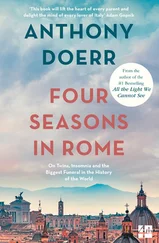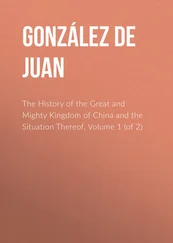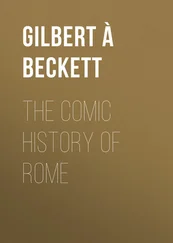Theodor Mommsen - The history of Rome. Book IV
Здесь есть возможность читать онлайн «Theodor Mommsen - The history of Rome. Book IV» весь текст электронной книги совершенно бесплатно (целиком полную версию без сокращений). В некоторых случаях можно слушать аудио, скачать через торрент в формате fb2 и присутствует краткое содержание. Жанр: История, Культурология, на английском языке. Описание произведения, (предисловие) а так же отзывы посетителей доступны на портале библиотеки ЛибКат.
- Название:The history of Rome. Book IV
- Автор:
- Жанр:
- Год:неизвестен
- ISBN:нет данных
- Рейтинг книги:5 / 5. Голосов: 1
-
Избранное:Добавить в избранное
- Отзывы:
-
Ваша оценка:
- 100
- 1
- 2
- 3
- 4
- 5
The history of Rome. Book IV: краткое содержание, описание и аннотация
Предлагаем к чтению аннотацию, описание, краткое содержание или предисловие (зависит от того, что написал сам автор книги «The history of Rome. Book IV»). Если вы не нашли необходимую информацию о книге — напишите в комментариях, мы постараемся отыскать её.
The history of Rome. Book IV — читать онлайн бесплатно полную книгу (весь текст) целиком
Ниже представлен текст книги, разбитый по страницам. Система сохранения места последней прочитанной страницы, позволяет с удобством читать онлайн бесплатно книгу «The history of Rome. Book IV», без необходимости каждый раз заново искать на чём Вы остановились. Поставьте закладку, и сможете в любой момент перейти на страницу, на которой закончили чтение.
Интервал:
Закладка:
version="1.0" encoding="utf-8"?> sci_history sci_culture Theodor Mommsen The history of Rome. Book IV
The History of Rome by Theodor Mommsen, translated by William Purdie Dickson
en de shoomow FB Editor v2.0, FB Writer v1.1 24 July 2009 C8271AB5-7AC0-4C14-B899-BBE89ACD604E 1.0Ver 1.0 - Файл скомпилирован из материалов, взятых из библиотеки проекта Гутенберг (The Project Gutenberg, www.gutenberg.net). Изначальный текст подготовлен Дэвидом Цепонисом (David Ceponis).
Theodor Mommsen
The history of Rome. Book IV
THE HISTORY OF ROME. BOOK IV
The Revolution
by THEODOR MOMMSEN
Translated with the Sanction of the Author
by William Purdie Dickson, D.D., LL.D. Professor of Divinity in the University of Glasgow
Preparer's Note
This work contains many literal citations of and references to words, sounds, and alphabetic symbols drawn from many languages, including Gothic and Phoenician, but chiefly Latin and Greek. This English language Gutenberg edition, constrained within the scope of 7-bit ASCII code, adopts the following orthographic conventions:
1) Words and phrases regarded as "foreign imports", italicized in the original text published in 1903; but which in the intervening century have become "naturalized" into English; words such as "de jure", "en masse", etc. are not given any special typographic distinction.
2) Except for Greek, all literally cited non-English words that do not refer to texts cited as academic references, words that in the source manuscript appear italicized, are rendered with a single preceding, and a single following dash; thus, -xxxx-.
3) Greek words, first transliterated into Roman alphabetic equivalents, are rendered with a preceding and a following double-dash; thus, --xxxx--. Note that in some cases the root word itself is a compound form such as xxx-xxxx, and is rendered as --xxx-xxx--
4) Simple non-ideographic references to vocalic sounds, single letters, or alphabeic dipthongs; and prefixes, suffixes, and syllabic references are represented by a single preceding dash; thus, -x, or -xxx.
5) The following refers particularly to the complex discussion of alphabetic evolution in Ch. XIV: Measuring And Writing). Ideographic references, meaning pointers to the form of representation itself rather than to its content, are represented as -"id:xxxx"-. "id:" stands for "ideograph", and indicates that the reader should form a mental picture based on the "xxxx" following the colon. "xxxx" may represent a single symbol, a word, or an attempt at a picture composed of ASCII characters. E. g. --"id:GAMMA gamma"-- indicates an uppercase Greek gamma-form Followed by the form in lowercase. Some such exotic parsing as this is necessary to explain alphabetic development because a single symbol may have been used for a number of sounds in a number of languages, or even for a number of sounds in the same language at different times. Thus, -"id:GAMMA gamma" might very well refer to a Phoenician construct that in appearance resembles the form that eventually stabilized as an uppercase Greek "gamma" juxtaposed to another one of lowercase. Also, a construct such as --"id:E" indicates a symbol that in graphic form most closely resembles an ASCII uppercase "E", but, in fact, is actually drawn more crudely.
6) The numerous subheading references, of the form "XX. XX. Topic" found in the appended section of endnotes are to be taken as "proximate" rather than topical indicators. That is, the information contained in the endnote indicates primarily the location in the main text of the closest indexing "handle", a subheading, which may or may not echo congruent subject matter.
The reason for this is that in the translation from an original paged manuscript to an unpaged "cyberscroll", page numbers are lost. In this edition subheadings are the only remaining indexing "handles" of sub-chapter scale. Unfortunately, in some stretches of text these subheadings may be as sparse as merely one in three pages. Therefore, it would seem to make best sense to save the reader time and temper by adopting a shortest path method to indicate the desired reference.
7) Dr. Mommsen has given his dates in terms of Roman usage, A.U.C.; that is, from the founding of Rome, conventionally taken to be 753 B. C. To the end of each volume is appended a table of conversion between the two systems.
CONTENTS
BOOK IV: The Revolution
I. The Subject Countries Down to the Times of the Gracchi
II. The Reform Movement and Tiberius Gracchus
III. The Revolution and Gaius Gracchus
IV. The Rule of the Restoration
V. The Peoples of the North
VI. The Attempt of Marius at Revolution and the Attempt of Drusus at Reform
VII. The Revolt of the Italian Subjects, and the Sulpician Revolution
VIII. The East and King Mithradates
IX. Cinna and Sulla
X. The Sullan Constitution
XI. The Commonwealth and Its Economy
XII. Nationality, Religion, and Education
XIII. Literature and Art
BOOK FOURTH
The Revolution
"Aber sie treiben's toll;
Ich furcht', es breche".
Nicht jeden Wochenschluss
Macht Gott die Zeche.
GoetheChapter I
The Subject Countries Down to the Times of the Gracchi
With the abolition of the Macedonian monarchy the supremacy of Rome not only became an established fact from the Pillars of Hercules to the mouths of the Nile and the Orontes, but, as if it were the final decree of fate, it weighed on the nations with all the pressure of an inevitable necessity, and seemed to leave them merely the choice of perishing in hopeless resistance or in hopeless endurance. If history were not entitled to insist that the earnest reader should accompany her through good and evil days, through landscapes of winter as well as of spring, the historian might be tempted to shun the cheerless task of tracing the manifold and yet monotonous turns of this struggle between superior power and utter weakness, both in the Spanish provinces already annexed to the Roman empire and in the African, Hellenic, and Asiatic territories which were still treated as clients of Rome. But, however unimportant and subordinate the individual conflicts may appear, they have collectively a deep historical significance; and, in particular, the state of things in Italy at this period only becomes intelligible in the light of the reaction which the provinces exercised over the mother-country.
Except in the territories which may be regarded as natural appendages of Italy - in which, however, the natives were still far from being completely subdued, and, not greatly to the credit of Rome, Ligurians, Sardinians, and Corsicans were continually furnishing occasion for "village triumphs" - the formal sovereignty of Rome at the commencement of this period was established only in the two Spanish provinces, which embraced the larger eastern and southern portions of the peninsula beyond the Pyrenees. We have already [1] . III. VII. The State of Culture in Spain.
attempted to describe the state of matters in the peninsula. Iberians and Celts, Phoenicians, Hellenes, and Romans were there confusedly intermingled. The most diverse kinds and stages of civilization subsisted there simultaneously and at various points crossed each other, the ancient Iberian culture side by side with utter barbarism, the civilized relations of Phoenician and Greek mercantile cities side by side with an incipient process of Latinizing, which was especially promote by the numerous Italians employed in the silver mines and by the large standing garrison. In this respect the Roman township of Italica (near Seville) and the Latin colony of Carteia (on the bay Of Gibraltar) deserve mention - the latter being the first transmarine urban community of Latin tongue and Italian constitution. Italica was founded by the elder Scipio, before he left Spain (548), for his veterans who were inclined to remain in the peninsula - probably, however, not as a burgess-community, but merely as a market-place [2] . Italica must have been intended by Scipio to be what was called in Italy forum et conciliabulum civium Romanorum ; Aquae Sextiae in Gaul had a similar origin afterwards. The formation of transmarine burgess-communities only began at a later date with Carthage and Narbo: yet it is remarkable that Scipio already made a first step, in a certain sense, in that direction.
.
Интервал:
Закладка:
Похожие книги на «The history of Rome. Book IV»
Представляем Вашему вниманию похожие книги на «The history of Rome. Book IV» списком для выбора. Мы отобрали схожую по названию и смыслу литературу в надежде предоставить читателям больше вариантов отыскать новые, интересные, ещё непрочитанные произведения.
Обсуждение, отзывы о книге «The history of Rome. Book IV» и просто собственные мнения читателей. Оставьте ваши комментарии, напишите, что Вы думаете о произведении, его смысле или главных героях. Укажите что конкретно понравилось, а что нет, и почему Вы так считаете.










